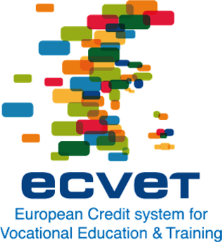 There are two binding documents for the partners on sending and hosting side as well as for the learners – the Memorandumg of Understanding (MoU) and the Learning Agreement (LA). Whereas the Memorandum of Understanding defines the framework for periods of learning, the learning agreement formulates specific content and expected results in form of expected learning outcomes.
There are two binding documents for the partners on sending and hosting side as well as for the learners – the Memorandumg of Understanding (MoU) and the Learning Agreement (LA). Whereas the Memorandum of Understanding defines the framework for periods of learning, the learning agreement formulates specific content and expected results in form of expected learning outcomes.
The ![]() EU Roadmap gives a comprehensive overview about all necessary steps of a mobility project applying ECVET.
EU Roadmap gives a comprehensive overview about all necessary steps of a mobility project applying ECVET.
Memorandum of understanding
The Memorandum of Understanding forms the framework for cooperation between partner organisations, from two or more countries.
It aims to establish mutual trust and a shared understanding of the objectives of the mobility between the partners.
Its components are:
- Information about the partner organisations
- Qualifications covered
Example: Cook
- Units of learning outcomes relevant for the mobility process
Example: Production of meals, composition and planning of menus, work in a team…
- Assessment, documentation, validation and recognition
- Procedures and methods of assessment by the host institution.
Example: Portfolio assessment or other evidence collection, skills demonstration, evaluation discussion, observing, self-evaluation…
- The form of documentation by the host institution.
Example: Europass Mobility, form sheets specified by the sending institution etc.
- Validation: confirmation of learning outcomes achieved abroad – how does the home institution determine that the learning outcomes achieved abroad can be validated;
- Recognition: how does the home institution officially confirm that the learning outcomes have been achieved and validated?
Example: By issuing a certificate, Europass Mobility
Useful links:
 Draft Memorandum of understanding by the ECVET Secretariat
Draft Memorandum of understanding by the ECVET Secretariat Examples of completed Memoranda of Understanding
Examples of completed Memoranda of Understanding
Learning Agreement
Before the geographical mobility takes place it should be clearly defined which knowledge, skills and competences a beneficiary should acquire during the stay abroad.
The learning agreement is a contract signed by all mobility parties, including the learner, in which the learning duration and expected learning outcomes are confirmed alongside mechanisms for assessment, validation and recognition.
Learning outcomes are defined as knowledge, skills and competences which are compiled in „units of learning outcomes“. How to define them is described in the ![]() next chapter.
next chapter.
